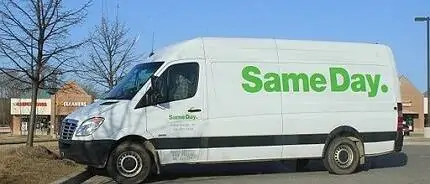Online shopping offers endless possibilities and delivery options. Whether books, clothes, food – regardless of the time of day, we can buy almost any product imaginable from countless shops. What’s more, providers are becoming increasingly creative in their efforts to turn a quick online purchase into a memorable experience. The virtual store needs to attract and retain as many customers as possible through its appearance and user-friendliness. Ultimately, however, it doesn’t matter whether it’s a regular or occasional customer. In the end, they both have one thing in common: they want to be able to receive their delivery safely and promptly. If the delivery turns into a long, drawn-out odyssey for the customer, it will also affect their relationship with the shop.
This is also the result of the MetaPack study from 2015. The survey showed that more than 80 percent of German customers are encouraged to buy from the same provider in the future simply by having a positive shipping experience. Fortunately, CEP services have now come up with many alternatives to ensure this positive experience and to be able to deliver parcels as successfully as possible. Door-to-door delivery is still very much in vogue. However, individual delivery options are also increasingly appreciated. According to the MetaPack survey, Packstations are particularly popular and can already be specified as an optional delivery address in many shops. However, this alternative is increasingly falling victim to fraud, which has already caused a great deal of financial damage to numerous online vendors. A less risky option for shop owners, and one that is also popular, is the option of having parcels delivered to a preferred location, day or neighbor. Delivery directly to the workplace is particularly convenient for working online shoppers, and a special logistics solution makes it legally secure.
Offer a wide selection – including shipping options
Regardless of which delivery option is the most practical in a particular case, it is up to the online shop operator to offer it. In many shops, it is still the rule that the delivery address must not differ from the billing address. This means that it is not possible for the customer to use the different options and have the package sent to a packing station or to their workplace, for example. However, sooner or later, these restrictions will cause online shops to shoot themselves in the foot. This is because a customer who is usually not at home during the day will – if given the choice – most likely choose a provider that offers them a selection of alternative delivery addresses.
However, it is not just the delivery address that plays a role in the shipping experience. No matter how well the options are tailored to the individual needs of the customer, if the parcel service does not deliver reliably, it is of no use. Unfortunately, many shops make the decision for the customer and always ship with the same service provider. Only a third of retailers use different parcel services – but only a fraction of those give the customer a free choice, and often only for an extra charge. Ultimately, however, providers only have a choice between a handful of parcel services. Quite a few online shippers are dissatisfied with the options available and are also looking for better alternatives.
Seek and you shall find – or just set up your own
The problematic last mile, but also the demand for the shortest possible delivery times, are a challenge for both delivery services and online shops. Same-day delivery is considered to be a particular challenge for the coming years. What used to be considered a premium category of the courier business under the name “express delivery” is to become a mass product thanks to the large providers. If the strategists at McKinsey are to be believed, 15 percent of parcels will be delivered within a few hours in the coming years. This is another reason why online shop operators are keeping their eyes open for alternative delivery service providers. And they are increasingly turning to relatively young providers and start-ups, which are more like a courier service in terms of their basic principle, especially for short-time deliveries. Or, in some cases, even set up their own delivery service, as Amazon has done, for example.
Although retailers can no longer actively influence whether, when and how the shipment ultimately ends up at the optional address, they still bear some responsibility for the delivery. After all, the purchase is not complete until the customer has the inventory in hand. Ultimately, a failed delivery is not only the fault of the delivery service, but also of the online vendor. As the last step in the online purchase process, the delivery of the goods plays an important part in the overall impression. And the higher the probability of a successful delivery, the more satisfied the customer will be. By offering different delivery options, online vendors show their commitment and goodwill to offering their customers the best possible convenience.
Little effort – big impact
For shop owners, the effort is comparatively low and is out of all proportion to the positive effect. Since most delivery options are usually only available with a specific customer number, the delivery addresses can be validated without any problems. In addition, a brief explanation of the respective option and an easily accessible customer service round off the additional offer. This alone can positively influence the entire shopping experience and create the best conditions for turning occasional buyers into loyal regular customers. Of course, it’s not just shipping that builds a loyal relationship with an online store. Nevertheless, the entire shipping process plays an important part in this and should therefore be part of the overall service offering. If this is done well, the customer will thank you with trust and loyalty.
For more information on urban logistics, see: The last mile of e-commerce logistics – challenges and solutions.
Image source: Dwight Burdette, License: Creative Commons Attribution 3.0 Unported
